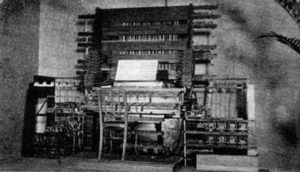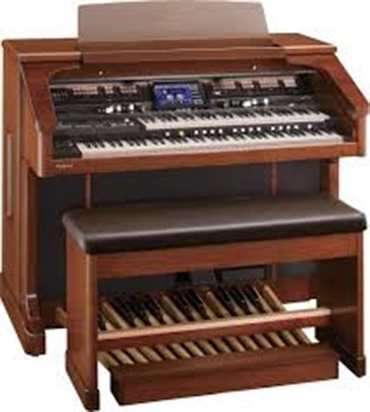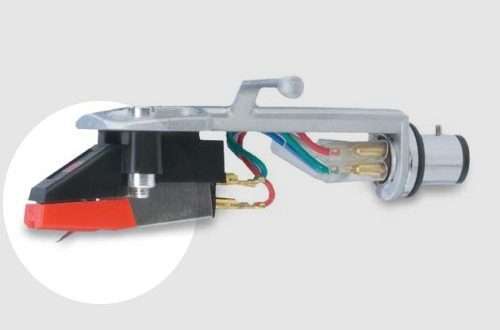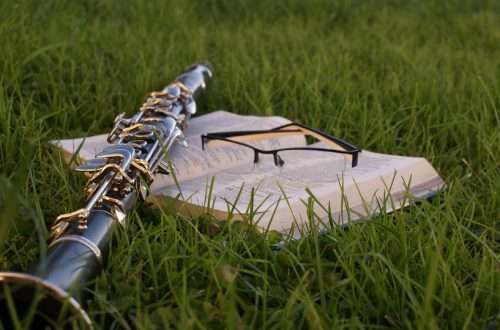
History of the electric organ
The history of electronic musical instruments began at the dawn of the 20th century. The invention of radio, telephone, telegraph gave impetus to the creation of radio-electronic instruments. A new direction in musical culture appears – electromusic.
Beginning of the age of electronic music
One of the first electric musical instruments was the telharmonium (dynamophone). It can be called the progenitor of the electric organ. This instrument was created by American engineer Tadeus Cahill.  Having begun the invention at the end of the 19th century, in 1897 he received a patent for the “Principle and apparatus for producing and distributing music by means of electricity”, and by April 1906 he completed it. But to call this unit a musical instrument could only be a stretch. It consisted of 145 electric generators tuned to different frequencies. They transmitted sounds through telephone wires. The tool weighed about 200 tons, had a length of 19 meters.
Having begun the invention at the end of the 19th century, in 1897 he received a patent for the “Principle and apparatus for producing and distributing music by means of electricity”, and by April 1906 he completed it. But to call this unit a musical instrument could only be a stretch. It consisted of 145 electric generators tuned to different frequencies. They transmitted sounds through telephone wires. The tool weighed about 200 tons, had a length of 19 meters.
Following Cahill, the Soviet engineer Lev Theremin in 1920 created a full-fledged electric musical instrument, called the Theremin. When playing on it, the performer did not even need to touch the instrument, it was enough to move his hands relative to the vertical and horizontal antennas, changing the frequency of the sound.
Successful business idea
But the most popular electronic musical instrument was perhaps the Hammond electric organ. It was created by American Lorenz Hammond in 1934. L. Hammond was not a musician, he did not even have an ear for music. We can say that the creation of an electric organ was at first a purely commercial enterprise, as it turned out to be quite successful.  The keyboard from the piano, modernized in a special way, became the basis of the electric organ. Each key was connected to an electrical circuit with two wires, and with the help of simple switches, interesting sounds were extracted. As a result, the scientist created an instrument that sounded like a real wind organ, but was much smaller in size and weight. April 24, 1934 Lawrence Hammond received a patent for his invention. The instrument began to be used instead of the usual organ in the churches of the United States. The musicians appreciated the electric organ, the number of celebrities who used the electric organ included such popular musical groups of the time as the Beatles, Deep Purple, Yes and others.
The keyboard from the piano, modernized in a special way, became the basis of the electric organ. Each key was connected to an electrical circuit with two wires, and with the help of simple switches, interesting sounds were extracted. As a result, the scientist created an instrument that sounded like a real wind organ, but was much smaller in size and weight. April 24, 1934 Lawrence Hammond received a patent for his invention. The instrument began to be used instead of the usual organ in the churches of the United States. The musicians appreciated the electric organ, the number of celebrities who used the electric organ included such popular musical groups of the time as the Beatles, Deep Purple, Yes and others.
In Belgium, in the mid-1950s, a new model of the electric organ was developed. The Belgian engineer Anton Pari became the creator of the musical instrument. He owned a small firm for the production of television antennas. The development and sale of a new model of an electric organ brought a good income to the company. The Pari organ differed from the Hammond organ in having an electrostatic tone generator. In Europe, this model has become quite popular.
In the Soviet Union, under the Iron Curtain, young music lovers listened to the electric organ on underground records. Recordings on x-rays delighted the Soviet youth. One of these romantics was the young Soviet electronics engineer Leonid Ivanovich Fedorchuk. In 1962, he got a job at the Elektroizmeritel plant in Zhytomyr, and already in 1964, the first domestic-made electric organ called Romantika sounded at the plant. The principle of sound generation in this instrument was not electromechanical, but purely electronic.
One of these romantics was the young Soviet electronics engineer Leonid Ivanovich Fedorchuk. In 1962, he got a job at the Elektroizmeritel plant in Zhytomyr, and already in 1964, the first domestic-made electric organ called Romantika sounded at the plant. The principle of sound generation in this instrument was not electromechanical, but purely electronic.
Soon the first electric organ will turn a century old, but its popularity has not gone away. This musical instrument is universal – suitable for concerts and studios, for performing church and modern popular music.





